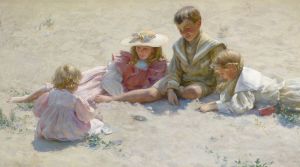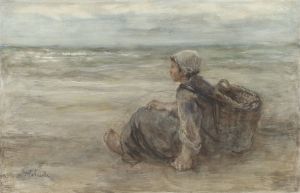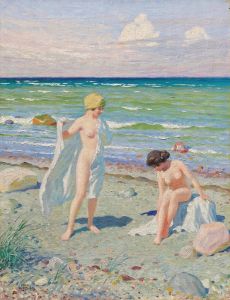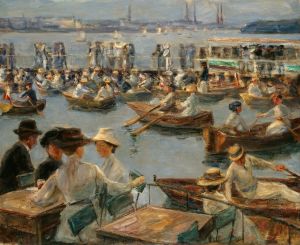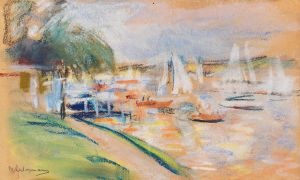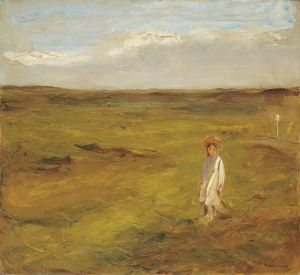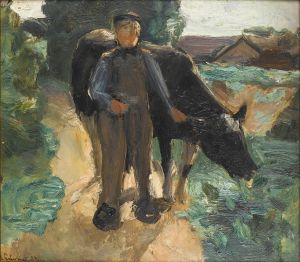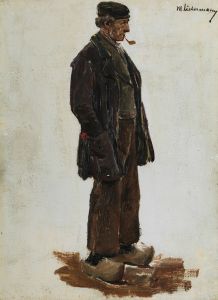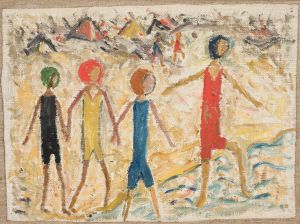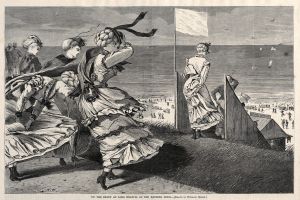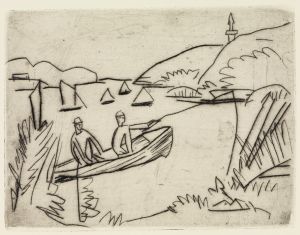
Spielende Kinder am Strand
A hand-painted replica of Max Liebermann’s masterpiece Spielende Kinder am Strand, meticulously crafted by professional artists to capture the true essence of the original. Each piece is created with museum-quality canvas and rare mineral pigments, carefully painted by experienced artists with delicate brushstrokes and rich, layered colors to perfectly recreate the texture of the original artwork. Unlike machine-printed reproductions, this hand-painted version brings the painting to life, infused with the artist’s emotions and skill in every stroke. Whether for personal collection or home decoration, it instantly elevates the artistic atmosphere of any space.
"Spielende Kinder am Strand" (Playing Children on the Beach) is a painting by the renowned German artist Max Liebermann, a leading figure in the Impressionist movement in Germany. Liebermann, born in 1847 in Berlin, was a pivotal figure in the transition from traditional academic art to modernism in Germany. His works often depicted scenes of everyday life, capturing the essence of leisure and the natural world with a keen eye for light and movement.
This particular painting, "Spielende Kinder am Strand," exemplifies Liebermann's fascination with leisure activities and his ability to capture the spontaneity and joy of childhood. The painting portrays a group of children playing on a sandy beach, a subject that Liebermann revisited multiple times throughout his career. The scene is imbued with a sense of freedom and innocence, characteristic of Liebermann's work during this period.
Liebermann's technique in this painting reflects his Impressionist influences, with loose brushwork and a focus on the effects of light and atmosphere. The use of light in "Spielende Kinder am Strand" is particularly noteworthy; Liebermann skillfully captures the bright, reflective quality of sunlight on the sand and water, creating a vibrant and lively scene. The colors are soft yet vivid, with a palette dominated by the blues of the sky and sea, the golden hues of the sand, and the subtle tones of the children's clothing.
The composition of the painting is dynamic, with the children scattered across the beach in various poses of play. This arrangement not only conveys movement but also draws the viewer's eye across the canvas, inviting them to explore each figure and their interaction with the environment. Liebermann's attention to detail in depicting the children's gestures and expressions adds a layer of realism and charm to the painting.
Max Liebermann was part of the Berlin Secession, an art movement that sought to break away from the conservative art establishment in Germany. His works, including "Spielende Kinder am Strand," were instrumental in promoting modern art in Germany and influencing subsequent generations of artists. Liebermann's focus on everyday subjects and his innovative use of light and color were significant contributions to the development of modern art in Europe.
Throughout his career, Liebermann faced both acclaim and criticism. His Jewish heritage and modernist style made him a target during the rise of the Nazi regime, which condemned his work as "degenerate art." Despite this, Liebermann's legacy endured, and he is remembered today as one of Germany's most important artists.
"Spielende Kinder am Strand" remains a testament to Liebermann's skill and vision as an artist. It captures a moment of pure joy and simplicity, reflecting both the beauty of the natural world and the innocence of childhood. The painting continues to be celebrated for its artistic merit and its place within the broader context of European Impressionism.





